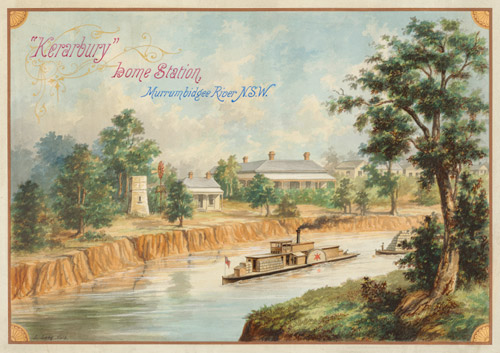Getting to market
'Paddock to plate' is the term used to describe the food distribution chain linking growers and consumers. Development of food processing techniques has seen this chain lengthen dramatically. From production and harvest to processing, distribution, wholesaling, retailing, and consuming, the food system now encompasses many activities between food growers and the food we eat.
Before 19th century industrialization, 'paddock to plate' distribution usually involved face-to-face contact between growers and consumers. Local farmers brought their excess produce into town for direct sale at the market. Time taken getting produce to market took its toll on quality and productivity as carting goods by road took farmers away from their fields. Transportation by river, rail and motorised vehicles saw increased productivity while refrigeration allowed for long distance freighting without waste. Since the mid 20th century, most products on our grocery store shelves have usually traveled countless miles and been handled by many people by the time they are ready for purchase. The increasing number of processes between the farm gate and our plates has seen primary producers and consumers pushed ever further apart.
> See the spread of agricultural crop production centres across NSW
On landing at Sydney Cove in 1788, the first fleeters continued to exchange goods by traditional European methods. Beyond locally foraged perishables, all staples were provided by the government stores until local agricultural efforts and visiting merchant ships swelled the amount of trade goods available. Colonists gathering at the Sydney wharf on ration day quickly took on the appearance of a regulated market and became the social & economic hub of the settlement.
As the city expanded, the marketplace moved along George St, until 1840 when it settled on the present day site of the Queen Victoria Building (QVB). A ‘Paddy’s Market’ also operated in the Haymarket from the 1840s, and late trading on Saturday nights ensured a public promenade between the two market sites. Redevelopment of the QVB site into a palatial arcade in the 1890s saw the Sydney Markets permanently relocated outside the CBD, first to Haymarket (1910) and later to Flemington (1975).
> See images of how produce gets to the Sydney markets
The 21st century has seen the centralised Sydney Market fragmented into a broad array of weekly and monthly, suburban and country craft, flea and farmers markets which continue to attract the bargain-hunting crowd as consumers seek to reconnect with the suppliers of the food they eat.


